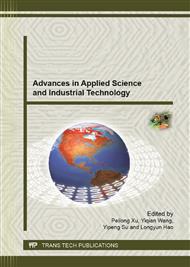p.174
p.178
p.182
p.186
p.190
p.197
p.201
p.207
p.211
The Study of Surface Longitudinal Crack on SPA-H Steel Slab by CSP
Abstract:
By the means of Metallographic analysis, scanning electron microscope (SEM), and energy spectrum analysis, the development of SPA-H surface middle longitudinal crack was studied. To find out the causes of the longitudinal crack, statistical method was adopted. The result shows that, the generating process of longitudinal crack was: the changing of mould powder owing to Ti and Al element, low overheating degree, and bad slag smelting, which leading to bad transfer heat of slab and depression. For the thermal stress of solidifying contraction, molten steel static pressure, and mould friction, the stress concentration was produced in the weak place of solidified shell, for example, in the small equiaxial crystal less than 1mm. the cracking occurred when the stress more than allow strength of high temperature slab.
Info:
Periodical:
Pages:
190-196
Citation:
Online since:
September 2013
Authors:
Keywords:
Price:
Сopyright:
© 2013 Trans Tech Publications Ltd. All Rights Reserved
Share:
Citation:


